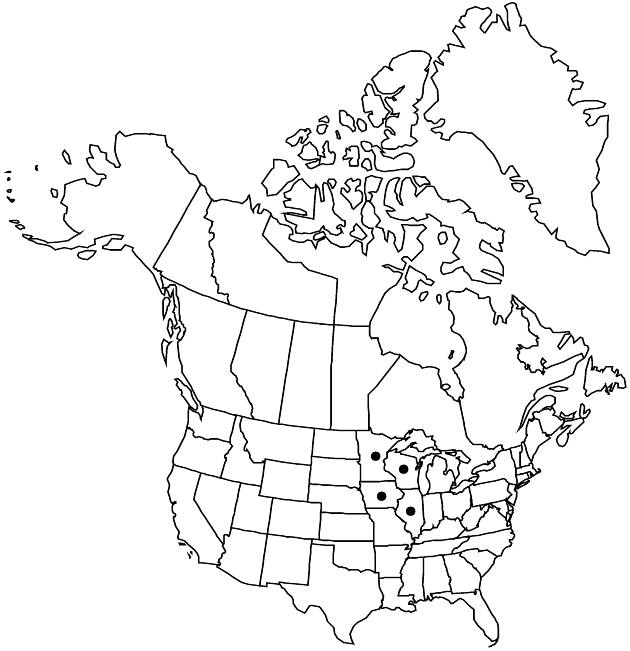Difference between revisions of "Solidago sciaphila"
Contr. U.S. Natl. Herb. 13: 371. 1911.
FNA>Volume Importer |
FNA>Volume Importer |
(No difference)
| |
Revision as of 18:42, 24 September 2019
Plants 20–70(–100) cm; caudices thick, woody. Stems single (sometimes purplish brown, ridged), glabrous, strigose distally in arrays. Leaves: basal and proximal tapering to winged petioles, blades (basal) spatulate, 20–40 mm, (proximal) obovate to oblanceolate or elliptic, 60–150(–200) × 30–55 mm, margins serrate (teeth shallow to 5 mm), ciliate, acute to obtuse, acuminate or mucronate, faces abaxially glabrate to sparsely strigose, especially on nerves, adaxially glabrous; mid and distal cauline sessile, lancelate or oblanceolate to elliptic, 30–100 × 20–40 mm, reduced distally, margins serrate to entire distally. Heads 20–180+ (1–6 per branch), in leafy wand-paniculiform arrays (2–)10–20(–40) cm, lateral branches usually not exceeding subtending leaf bracts. Peduncles 1–3 mm, strigose; bracts and bracteoles lanceolate to ovate, grading into phyllaries. Involucres campanulate, ca. 5 mm. Phyllaries in 3–4 series, appressed, strongly unequal, outer grading from ovate bracteoles, mid oblong, rounded, inner linear-oblong, acute, glabrous. Ray florets ca. 6–10; laminae 1.5–2.5 × 0.5 mm. Disc florets ca. 10; corollas 3.5–5 mm, lobes 1–1.5 mm. Cypselae (narrowly obconic) 2.5–3 mm, moderately strigillose; pappi ca. 4 mm (sometimes weakly clavate). 2n = 36.
Phenology: Flowering Aug–Sep.
Habitat: Sandstone and limestone bluffs and ledges along Mississippi River
Elevation: 200–400 m
Distribution

Ill., Iowa, Minn., Wis.
Discussion
Solidago sciaphila is similar to S. speciosa, but the proximal leaves are obviously serrate.
Selected References
None.